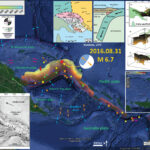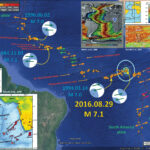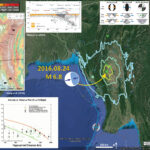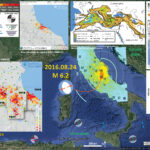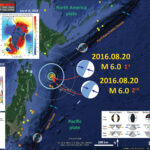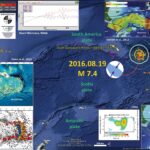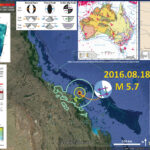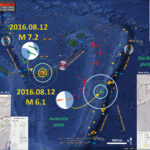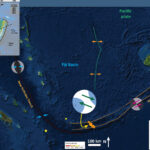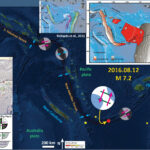We just had an earthquake in the New Britain region of the equatorial Pacific. Here is the USGS website for this M 6.7 (now M 6.8) earthquake. This is a very interesting earthquake for this region because it is very…
Earthquake Report: Equatorial Mid Atlantic Ridge
Between my trip to southern Oregon for a talk on Cascadia subduction zone earthquake and tsunami hazards and preparing for a talk on the tectonic contribution to sea-level rise, there were two earthquakes. The first one, which I will write…
Earthquake Report: Burma!
Well, there was an earthquake about 6 hours ago in Burma. This M 6.8 earthquake was rather deep, which is good for the residents of that area (the ground motions diminish with distance from the earthquake hypocenter). Here is the…
Earthquake Report: Italy
There was a M 6.2 earthquake in Italy tonight. Here is the USGS website for today’s earthquake. There is lots of information about the tectonics of this region. I can hardly do justice to all the people who have worked…
Earthquake Report: Japan!
There continue to be earthquakes probably related to the 2011.03.11 Tohoku-Oki M 9.0 earthquake (the 4th largest earthquake recorded on modern seismologic instruments). Here are two excellent summary Earthquake Report pages associated with this region: The original Earthquake Report for…
Earthquake Report: Scotia plate (S. Atlantic)
There was a large thrust earthquake along the Scotia plate today. Here is the USGS website for this M 7.4 earthquake. This is a very interesting region of the world with a very cool history. There is an east verging…
Earthquake Report: Australia!
Yesterday there was an earthquake in northeastern Australia. Here is the USGS website for this M 5.7 earthquake. This earthquake occurred in a region that also experienced a similar magnitude earthquake in 2011. Here is the USGS website for that…
Earthquake Report: New Hebrides / Tonga Update #2
I put together another map that shows these two earthquakes. The M 7.2 earthquake appears to be along a west-northwest striking right lateral strike-slip fault and the M 6.1 appears to be either a steeply or shallowly dipping normal (extension)…
Earthquake Report: New Hebrides Update #1
Well, as I was writing my initial report, some aftershocks hit. My initial report is(here, where I provide more information about the tectonics). At first I interpreted this M 7.2 earthquake as a northeast striking left-lateral strike-slip earthquake. However, these…
Earthquake Report: New Hebrides
There was just a M 7.2 earthquake between New Caledonia and Fiji. There is a strike slip plate boundary fault in this region that connects the New Hebrides Trench with Fiji. Here is the USGS website for this earthquake. Below…

